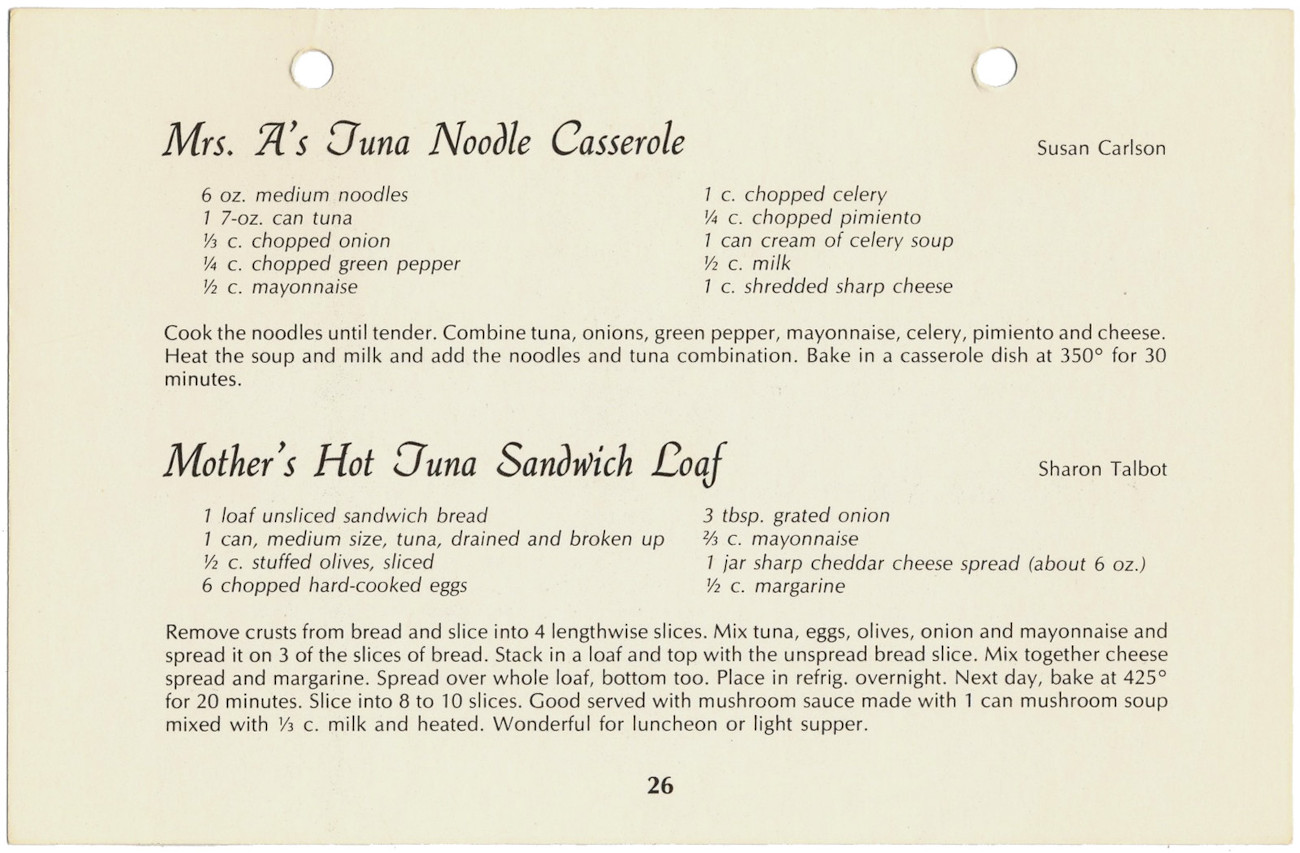Tuna Noodle Casserole — From Niche Pacific Northwest Dish To Famous Mid Century Casserole
In the world of tuna noodle casserole, there are only two people — those who love it like an old blanket of nostalgia or those who shrink at it with a soured face of disgust. The divide isn’t new. This love-hate has been around since the casserole’s inception. Before tuna noodle casserole became the one-pan meal of mid-century suburban dinner table, it called its home in a very surprising, unexpected area.

The Pacific Northwest. Yes, the place famous for innovative tech, unique landscapes, and fancy roasted coffee is the home of the tuna noodle casserole. And while you may think that the trio of canned tuna, canned cream of mushroom soup, and noodles is a post-WWII creation, think again because it came about during the early 20th century.

Why would a place — abundant with fresh seafood — create a dish that was so processed? The Puget Sound was always a midpoint for fishing boats. The Seattle area was generally the last stop in the American mainland before fishing boats headed out to catch in the waters around Alaska. Before the turn of the century, the 1900s saw an increase in fishing and canning. As the railroad system was further gaining traction in American society, the means to profit from canned, not fresh, fish expanded the seafood market. The turn of the century saw the building of more ports and further engrained the fishing and industrial seafaring destination of the coastal Pacific Northwest.
So by the 1930s, the concept of canned fish was an okay substitution. This was especially true in hard times when there were limited resources and restricted access to non-local ingredients.

Tuna noodle casserole’s debut was in a Sunset magazine article from a Mrs. W.F.S. in Kennewick Washington, yet it’s probably impossible to know the true origins of this first recipe. In the Portland area of Oregon, a German tuna noodle dish also appeared in several publications. Both of these prototypes made a white sauce from scratch. The original versions were there, but they weren’t known outside of those two states.
It wasn’t until 1934, when Campbell’s Soup Company released the canned cream of mushroom and cream of celery soups, that recipes for tuna noodle casserole proliferated in publications. The ease of this no-brainer slap-together casserole appealed to many, especially as families became more nuclear without extended families to lean on. The once oily, greasy canned fish people used during hard times, when there was no other viable protein, became a mainstay staple without a bat of an eye. And it was thanks to the canned soup company and passively through community cookbooks that the famous (or infamous) casserole gained national attention.

So why is the casserole’s origins hidden? Well it was purposely detached from its hometown. Famous food writer and East Coast transplant Helen Evans Brown immersed herself with regional West Coast fare from southern California up to Washington state through extensive cookbook collecting, recipe testing, and writing. In 1952 her publication of the West Coast Cookbook was a culmination of these years of research and cooking. Brown purposely omitted the recipe for a tuna noodle casserole, despite the casseroles’ very obvious Pacific Northwest origins. By the 1950s, there was already a pretty divided group of people either liking or hating the casserole. Brown admits her intentional omission of the recipe. If tuna noodle casserole became the most associated dish of that region, then to her, as a way to preserve the face of the Pacific Northwest, it was best never to write about the association at all.
By the time James Beard was writing a modified version of tuna noodle casserole in 1955, it had become a household name, especially in the midwest, where hot dishes (another word for casseroles) reigned supreme during the long and cold winter months. The casserole still holds its ground with countless versions or spin-offs. This once regionally specific anomaly got a fast track to fame through cheap and easily sourced canned ingredients. Very few casseroles have the same story.













